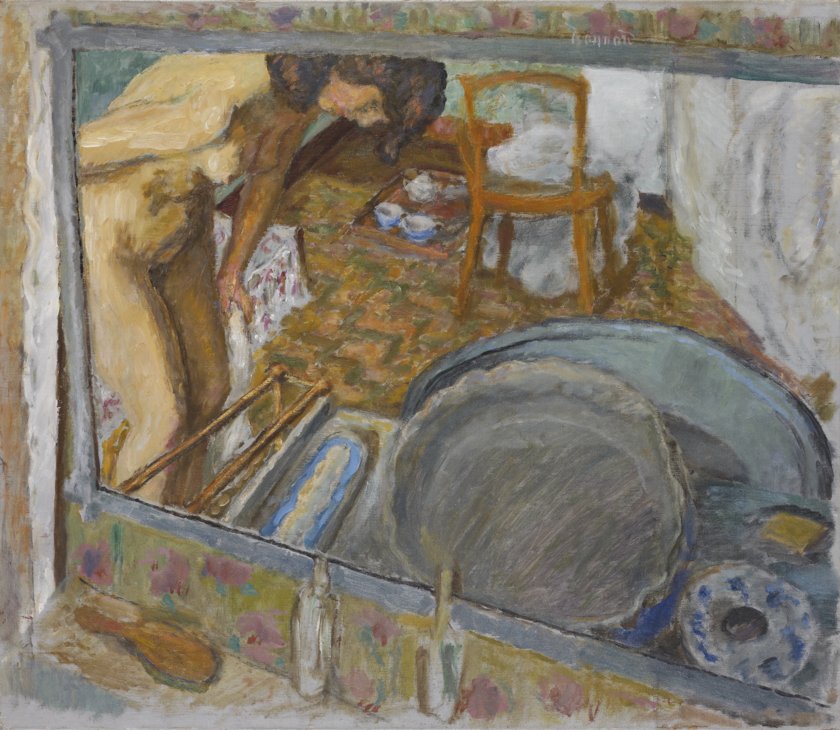Bonnard – Effet de glace

Pierre Bonnard, Effet de glace (le tub), 1909
Kunst Museum Winterthur, Hahnloser/Jaeggli Stiftung
Foto: Reto Pedrini, Zürich
The mirror as a compositional element is a popular motif in Bonnard's work. Originating from real life, usually from a bathroom, it expands the pictorial space by a complex level, creating an additional entanglement and thus raising the question of the relationship between image and reality. In terms of content, the motif also poses the question of observation, voyeurism and intimacy, which is conveyed from the painter's canvas to the viewer.
"The painter's eye lends objects a human value, reproduces things as the human eye sees them. And this view is flexible. And this view is variable."
Pierre Bonnard
As the Nabis group slowly began to disband, the members looked for new directions in their art. It was at this time, shortly before the turn of the century, that Pierre Bonnard painted his first nudes. At the same time, he adopted an increasingly impressionistic style, focussing more on the atmospheric, the momentary and the nature-oriented than had previously been the case with him. One of his preferred subjects became the nude in the bathroom, at the wash tub or by the bathtub. Initially still sensually and erotically charged – for example when he painted dressing or undressing – the focus shifted increasingly to the intimacy of the private sphere. His preferred model was his beloved Marthe, whom he had met in 1893 and who remained with him until her death in 1942.


